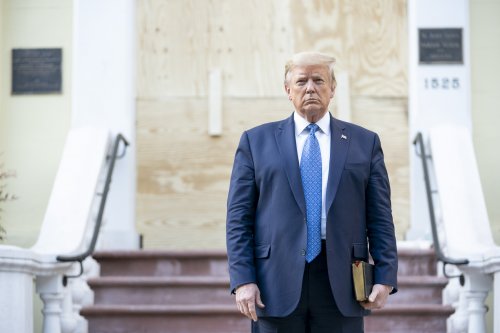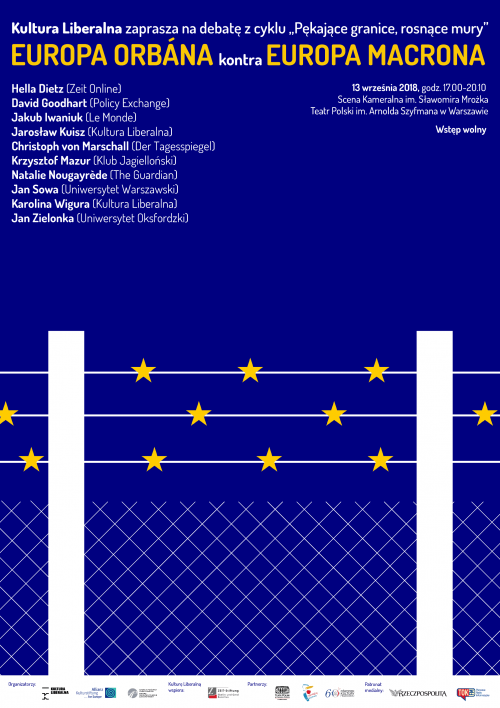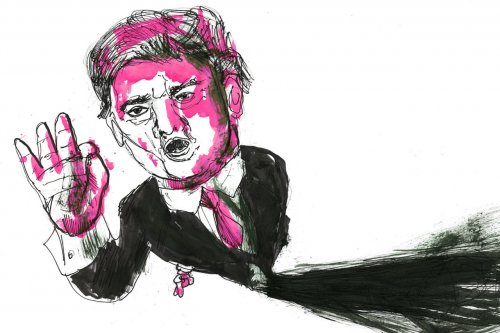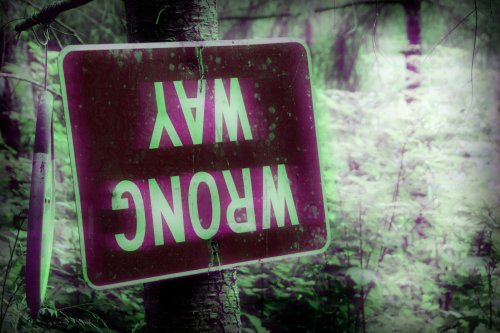You read other people’s letters? Better own up right away, for this book mercilessly makes us into voyeurs. She writes to him about a “little button on my breast”, which is deprived of caresses; she sends him lusty drawings. He is waxing moralistic to her or “misses her like a child” and “loves her madly”. Have you ever written to anyone like that? Surely, who hasn’t. So undoubtedly you would also want entire Poland to read it, feverishly excited. In that case report to the publishing house Karakter, recently offering us such delicacies with a relish (see a recent review by Paweł Majewski).
Sorry for the sarcasm. Editorially the book is excellent – with brilliant graphics and very diligently edited. But I feel uncomfortable reading such confessions. What is the purpose of that? Do the letters shed light on the artistic work of Szapocznikow, quite well researched at that? I sincerely ask myself that question. Certainly they do allow us to get a little closer to her work. In some of her pieces we find the same exhibitionism – at times narcissistic, at times ironic, at times gloomy and suffused with suffering, but always extremely personal and sincere.
A book is also a sculpture
But the letters are there – and read them I did. Let’s perhaps begin with how the book feels in your hands. Karakter puts an emphasis on the layout – Przemek Dębowski, one of the founders of the publishing house and at the same time a leading designer from the young generation, lets his passion loose with each new book. They are small monuments of the publishing art – graceful and functional. This time we get a soft, double cover, in a cream-coloured dust cover. What is such a bundle remindful of? For me it brings to mind a stack of love letters bound with a ribbon. Topped by a photograph of the loved one.
The melancholy portrait of Szapocznikow tellingly announces the content of the publication. The book presents almost exclusively her letters, which Stanisławski – a museum curator after all – carefully collected and catalogued. She apparently was not sentimental – she kept just a dozen replies. The cover photograph enchants with the force of expression: the artist is looking at us intently, as of she was appraising a model. The frame is cut a bit too tightly, which automatically makes us want to look inside – to learn more. The picture was made a few years after their parting (they formally divorced in 1958). Szapocznikow was then living with Roman Cieślewicz, an eminent engraver, while Stanisławski was in a happy relationship with Urszula Czartoryska – a recognised photography critic and art historian. All four were very close, they exchanged letters and visited each other.
Realities on the margins
A separate praise is due to the content editor of the collection. All 142 letters come with detailed footnotes, written by Agata Jakubowska, a researcher of Szapocznikow’s work. She provides us with ample information, without which the text would at times be incomprehensible. Besides purely biographical facts we also find information which creates a wide-ranging social and historical background. Thus we learn about places the two visited or where they lived and worked; about the books and newspapers they read; about exhibitions they saw or contributed to. We discover the backdrop of the most important political events, the bureaucratic and interpersonal oddities of the communist Poland, profiles of the artistic communities of Paris and Warsaw and fragments of correspondence with the closest friends – including Wojciech Fangor, Jan Lebenstein and Mieczysław Porębski.
The factographic content is accompanied by reproductions of drawings and photographs (most of them to be seen at the Museum of Contemporary Art website), and the whole is spiced up with some anecdotes. For me the most hilarious one was the story about visiting Pablo Picasso, during a low-budget vacation in September 1950 in France. “He receives us in his garden, where he is playing with his child and dog – Szapocznikow diligently notes in her small diary – and the atmosphere is simple, familial. He is great and naïve. The sky is blue. We borrow 2000 Fr.” Years later, interviewed by Piotr Rypson, Stanisławski remembers it slightly differently: “«We would like to pay tribute to you» […], I say, as befits a gentleman. Alina adds: «and borrow three thousand franks!». Right away, no beating about the bush! Alina had such a courage which sometimes embarrassed me.” Charming, isn’t it? And whom would you believe?
Illusion and reality
As far as the editorial side is concerned, the book is excellent. The only missing thing is a clear, graphically enhanced division of the epistolary collection into parts. Ordered chronologically, the letters relentlessly follow each other for 380 pages. After all, it’s 23 years of ample correspondence, with a few longer periods of hiatus, which could be highlighted in some way to the benefit of the reader.
Predictably, the early part of the book is the most touching. It contains many variations on the theme “I love you”, “I desire you”, ”Kisses”, “I miss you like hell”. These letters are full of affection, mutual fascination, innocent narcissism, but also doubts – sometimes genuine, sometimes hilariously mischievous. He is staying in Paris, where he studies museology at the prestigious École du Louvre, in the evenings earning his keep at the (famous) Les Halles market. She lives lightly, constantly travelling – between Paris, Prague, Łódź and Warsaw.
Unfortunately, a year later the bliss comes to an abrupt end. Szapocznikow, then 23, succumbs to ovarian tuberculosis – in those times a mortally dangerous illness – and lands in a hospitals near Paris, where she spends eight months. To while away the time she draws acts of female patients (“morally and sexually depraved morons”) and knits a sweater, Stanisławski dutifully sending her successive balls of wool. Her letters from that period are full of quandaries and reflections, sometimes astonishingly mature and perspicacious. And the earlier doubts are gaining a real shape – for the first time she thinks about parting, she tries to be rational: “It’s very simple: I lost patience. […] It’s the stinking mammon, dough, that is to blame.”
Not everybody is like everybody
Despite the perturbations (which relationship is free if them?) in 1951 they settle in Warsaw. A year later they marry and adopt a few-months-old son, Piotr. From the following years only brief postcards are preserved, from holiday excursions to the seaside and the mountains. But she is more and more fed up: “What could be wonderful, in the current setting is nightmarish. […] A man who no longer has his own world and his own interests and passions, succumbs to a complete decomposition and his fat body hovers like a dumpling over the life of the so called close ones. […] Artists consumed by their work should not get themselves entangled in family life. […] I am terrified by tepid things or duty-bound, I think I prefer things which are ice-cold but free and «descript».” Cruel, painfully true. It is mid-1950s, their life is still before them – both are thirty something.
They manage to stay with each other for two and a half years more. Their letters from that period and more and more unpleasant to read – they become unpleasantly sober, long, digressive, written with a force of inertia. On the other hand it is here that we find most information about the biographies of both correspondents. Szapocznikow takes the bull by the horns – she tries to plan her life and stick to her projects. The first significant works are created then – including First love (1954), Exhumed (1955), Monument of Polish-Russian Friendship (1955), Monster I (1957). In 1956 she takes part in an international exhibition in the Rodin Museum and she sells her first work to the Musée d’Art Moderne. A year later she has her first show in the Warsaw Zachęta.
Clumsy and unfinished objects
Today Szapocznikow’s sculptures grace the collections of the most prestigious art museums in the world, including Centre Pompidou in Paris and the London Tate Modern. Until the end of January this year the New York MoMA stages the exhibition “Sculpture Undone”, presented earlier in Los Angeles and Brussels. It reinforces the position Szapocznikow as a visionary pioneer of feminist art and conceptual sculpture – one of the most interesting artists of the post-war avant-garde. Curators of the exhibition – Joanna Mytkowska and Elena Filipovic – focused on works created in Paris, where she settled with Cieślewicz in 1963. He was on a professional fast track as artistic director of Vouge and Elle. “Romek is flourishing and thriving more and more in Paris [in French in the original], he is bossy and awash with influence and money, which he unfortunately squanders on financing my art”, she boasted to Fangor four years later.
It is in Paris that her most famous, most poignant works arose – Illuminated Woman (1966-67), Multiple Portrait (1967), A Tear (1971), Cancers (1969-7) or Herbarium (1972), where she brilliantly invokes the progressive work of artists from across the ocean, Louise Bourgeois and Eva Hesse. She experiments with synthetic resins, from which she casts lyrical-physiological multicoloured forms, enhanced with light at exhibition sites. The object of her study is the body, strangely conceived – as a field of identity and sexuality but also as an abode of disease and vessel for entropic processes. “My gesture is directed at the human body, this «entirely erogenous sphere», to its most vague and most ephemeral sensations,” she notes a short time before her death in her artistic creed. “Through the casts of the human body I attempt to immortalise in the transparent polyester the transient moments of life, its paradoxes and its absurdity. […] The human body is the most sensitive or perhaps the only source of all joy, all pain and all truth.”
This period seemed to be a prelude to a world-wide career. She very soon found her place in the Parisian artistic monde – thanks to her friendships Jean Cassou, Pierre Restany and famous César she penetrated the Nouveau Réalisme community. Her works were shown at the most important events, including the 23rd Venice Biennale (1962), Carrara Biennale (1963), the exhibition of Polish art in Kassel and the salon of young sculpture in Paris (1964). In 1966 Szapocznikow, just forty years old then, was awarded the prestigious Copley Prize, with Hans Arp, Marcel Duchamp, Max Ernst, Man Ray and others sitting in the jury. A year later Restany organises exhibitions in Paris, Stockholm and Copenhagen for her. Two years later doctors diagnose cancer.
…but the greatest of these is love [1 Cor 13:13]
But a doubt remains: when intimate letters cease to be private? Could privacy of others be something which vanishes, gradually evaporates? It probably has a lot to do with our intentions. For we don’t read letters out of sheer voyeurism but to glimpse in them the soul of a beautiful person and learn something from it – to read something about ourselves.
We will find here various sources of inspiration – some will be delighted with the sensual and extremes-ridden personality of the artist, some will be fascinated with the relation between the experience of growing up in the ghetto, the trauma of infertility and the struggle with cancer on the one hand and a peculiar understanding of maternity, femininity and nature of creation (“from the past cares and pains I can create”; “you have to model from the ropy and blood of a shredded heart”) on the other.
But I was moved by something else– the profundity and maturity of the relationship between these people. Do you remember, for example, the exalted romances of Osiecka and Przybora? Or Witkacy’s manic letters to his wife? Here we have a study of a completely different thing – an enchanting story of two extraordinary persons, throughout their life bound by a feeling of mutual care and spiritual symmetry. These letters are minima moralia, highly relevant in the times when love is habitually confused with passion, self-love, desire for possession. The protagonists of this book love, for they transcend their egoism: “Be friends with Romek, for this is the only possible way. […] These things go beyond sleeping with someone – anyway you can’t always sleep with the same partner, for it turns into something revolting. So no offence, let’s be human!!”; “Best wishes to Urszula. I need Romek so badly, call him and console him,” she wrote a few month before their formal divorce. “Your son has grown even more that we could have predicted. He is already wearing my shirts, ties, shoes,” Roman Cieślewicz reported on the adolescent Piotr Stanisławski, then living in Paris, eight years later. Beautiful, isn’t it? Beautiful and moving. Eros is a demon which can be tamed.
Book:
Alina Szapocznikow, Ryszard Stanisławski, Kroją mi się piękne sprawy. Listy 1948–1971, Karakter, Kraków 2012.




